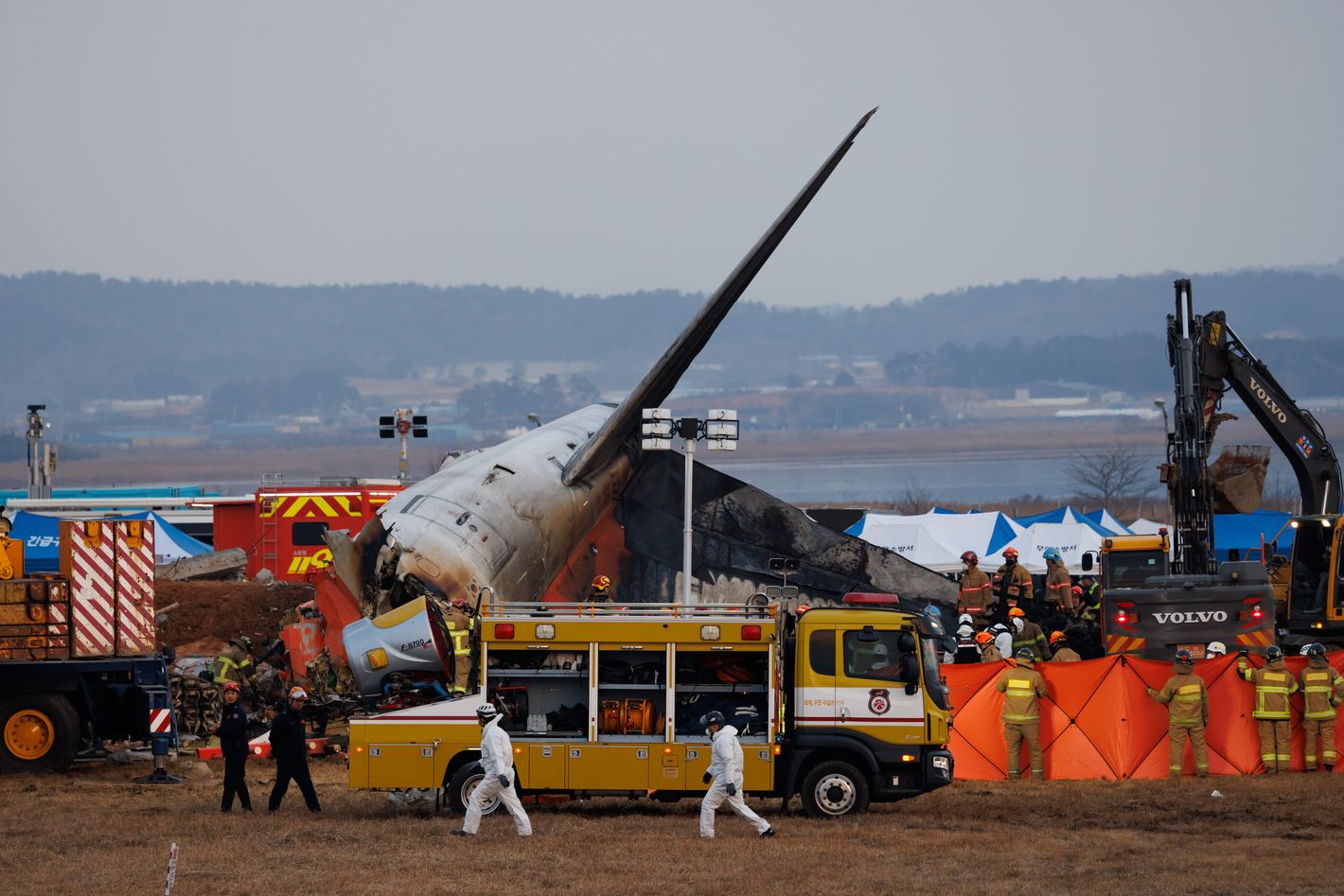Photo: SeongJoon Cho/Bloomberg/Getty Images
The Jeju Air 737 crash in South Korea on Sunday that killed all but two of the people onboard was in many respects as baffling as it was tragic. Given the scant information currently available, it’s hard even to piece together a coherent picture of what happened. “There’s a lot more questions than there are answers,” says Jim Brauchle, an aviation attorney who flew transport planes in the U.S. Air Force and now investigates air crashes as part of his law practice.
What we do know is that the plane was inbound from Bangkok, Thailand, to Muan, South Korea, with 175 passengers and six crew members when it apparently flew into a flock of birds and sucked at least one into an engine as it came in to land. Video taken from the ground appears to show a puff of smoke coming from the plane’s right engine, signaling a compressor stall that would have caused the engine to lose some if not all of its thrust.
The flight crew declared an emergency and aborted the landing. Around this time, the plane stopped transmitting its speed and location data via an automatic system called ADS-B, which lets the plane be tracked on websites like FlightRadar24. At the moment of its final transmission, the plane was a mile and half from the approach end of the runway and about 500 feet above the surface.
The aircraft swung around to attempt a landing coming in from the north. As it approached the end of the runway, it seemed to be under positive control of the flight crew but was not configured in the normal way for landing with flaps down and landing gear deployed. As a result, it was flying faster than normal and so had more speed to lose before it could settle onto the ground. Video appears to show the thrust reversers deployed, but they apparently did little to slow the plane.
By the time the 737 eventually did settle onto the ground, it was far down the runway. It then careered off the end of the asphalt and hit a berm at more than 100 mph. The fuselage broke up and burst into flames. The only survivors were two flight attendants who were strapped into backward-facing seats with shoulder harnesses at the very back of the plane.
Once crash investigators recover the black boxes and listen to what the pilots were saying in the cockpit, it will likely become clear what they were intending to do and how the incident unfolded. For now, aviation experts find several aspects of the crash deeply puzzling.
Why didn’t the landing gear deploy?
Judging by video recorded by witnesses on the ground, the plane did not have its wheels down as it came in for its initial landing attempt. Normally, these are deployed several miles out. The failure to have the landing gear down in the first place raises the troubling possibility that the flight crew never realized the gear was up.
Why did it lose a key communications system?
A bird strike can destroy an engine, but that shouldn’t affect the system that transmits the ADS-B data or other communications systems. “The only thing I can think of is if maybe another bird hit the antenna,” says Brauchle.
Why didn’t the plane immediately land?
An aircraft coming in to land is intentionally losing speed, so it doesn’t need a lot of engine power. The pilot’s handbook for the 737 specifies that if a bird strike occurs during landing, the pilot can elect to put the plane on the ground.
Why didn’t the crew troubleshoot the problems?
Rather than landing, the flight crew decided to increase engine power and climb away from the runway. If the engines were functioning well enough to allow this, there should have been time to fly to a nearby area where the crew could maintain a holding pattern while running through checklists to troubleshoot the problems. They could have asked for help from the ground, from their airline’s maintenance department, for example. Instead, they rushed to get the plane back on the ground, and in their haste, they seem to have skipped important steps that would have made the odds of survival much better. “We always used to say, ‘No fast hands in the cockpit,’” Brauchle says. “If something happens, just take a beat.”
It’s worth noting that even if the 737 had suffered some kind of mechanical failure that prevented the flight crew from deploying the landing gear, that doesn’t mean the plane couldn’t have been landed without loss of life. In 2011, a Boeing 767 operated by Poland’s LOT Airlines suffered a failure of its hydraulic system that made it impossible to lower the landing gear. The plane circled the airport at Warsaw for more than an hour to burn off as much fuel as possible, then conducted a carefully planned belly landing that left everyone onboard uninjured.
What was the earlier emergency?
According to Korean news sources, the same aircraft that crashed on December 29 had declared an emergency a day earlier during a flight from Jeju to Beijing, China. Shortly before reaching China, the plane squawked “7700,” indicating a general emergency, before diverting to Incheon International Airport in South Korea. It’s not clear, however, if the plane was suffering from a technical problem or responding to a medical emergency affecting one of the passengers.

